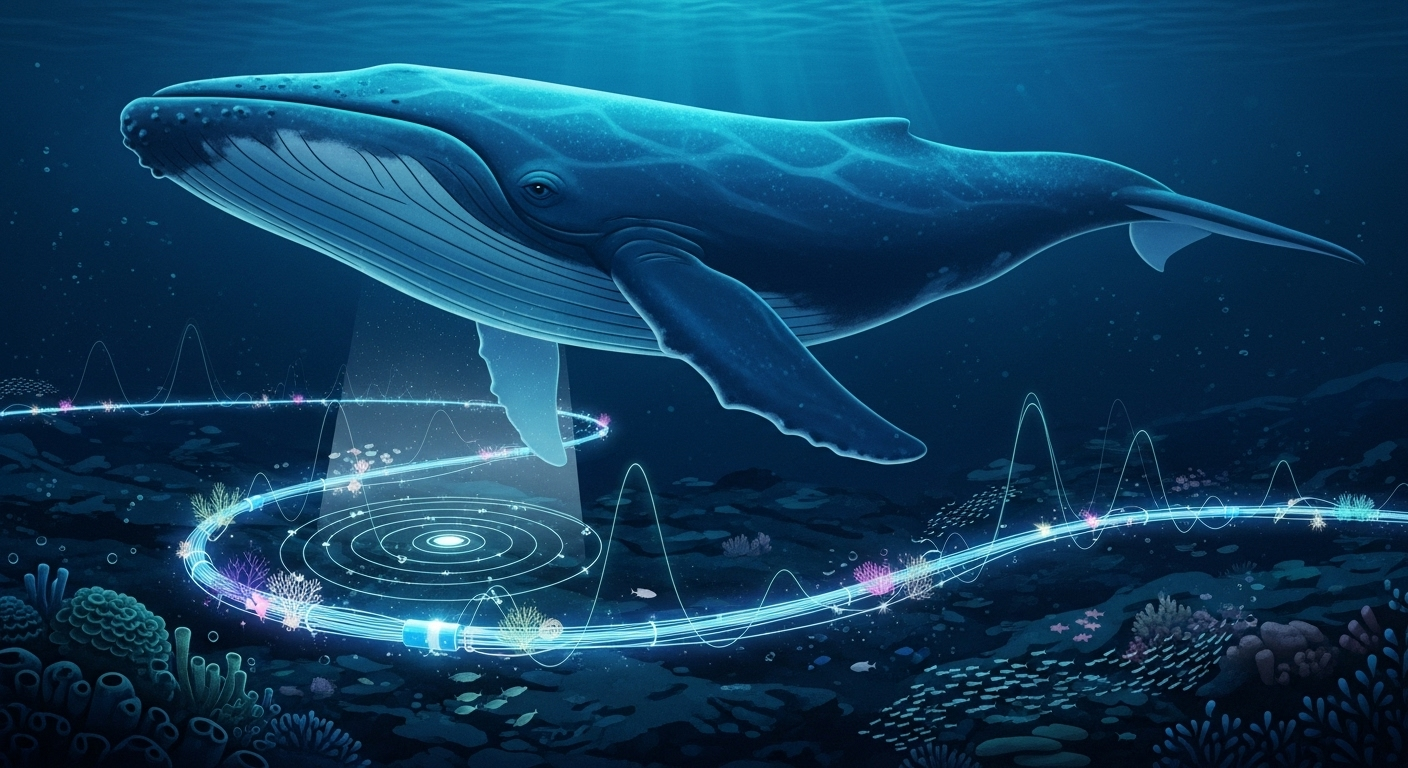Glossary of Key Terms
- Distributed Acoustic Sensing (DAS): A technology that transforms fiber optic cables into a dense array of acoustic sensors. It works by analyzing backscattered light from a shore-based instrument.¹﹐²
- Dark Fiber: Spare, unused optical fibers within existing submarine telecommunication cables. These can be repurposed for other uses, such as DAS monitoring.³﹐⁴
- Interrogator: The land-based optoelectronic instrument that sends laser pulses down a fiber optic cable. It analyzes the returning backscattered light to detect acoustic events.⁵﹐⁶
- Cryptic Mortality: Undetected whale deaths, particularly from ship strikes. This occurs when the carcass sinks offshore and is never recorded in official stranding data.⁷
- Vessel Speed Reduction (VSR): A management measure, either voluntary or mandatory. It requests or requires vessels to slow down to a specific speed (typically 10 knots) in designated areas to reduce the risk of fatal whale collisions.⁸﹐⁹﹐¹⁰
- Automatic Identification System (AIS): An automated tracking system used on ships. It provides real-time data on a vessel’s identity, location, course, and speed.¹¹﹐¹²﹐¹³
- Peto’s Paradox: The scientific observation that cancer incidence at the species level does not correlate with an organism’s body size or lifespan. This implies that large, long-lived animals like whales have evolved superior cancer-suppression mechanisms.¹⁴﹐¹⁵﹐¹⁶
Section 1: Executive Summary – The Bottom Line on Fiber Optic Whale Tracking
Each year, ship strikes kill an estimated 20,000 whales globally.¹⁷ This silent epidemic threatens the recovery of many endangered species. This report assesses a transformative solution: investing in Distributed Acoustic Sensing (DAS) technology for whale conservation.
Our primary finding is that this investment represents a paradigm shift. A focused 10-year program on the U.S. West Coast alone is projected to avert the deaths of nearly 500 endangered whales.¹⁸ The technology transforms a passive, global telecommunications backbone into an active, planetary-scale listening network. This offers an unprecedented, cost-effective, and scalable solution to the threat of whale-vessel collisions.
This approach moves conservation from a reactive, forensic discipline to a proactive, data-driven operational model. It provides significant, quantifiable returns for both ecosystems and humanity.
Summary of Key Findings
- Technological Viability. DAS is a proven technology. It repurposes the world’s existing submarine fiber optic cables into vast, real-time acoustic sensor arrays. It can detect, localize, and track endangered blue and fin whales over 100 km from a single shore-based installation.¹⁹﹐²⁰﹐⁵﹐²¹ This provides continuous, habitat-scale monitoring that far exceeds traditional methods.²²﹐²
- Measurable Success. The project’s success is quantifiable through a rigorous, tiered framework.²³﹐²⁴ This framework focuses on concrete outcomes. These include a direct reduction in whale mortality from ship strikes, a measurable increase in mariner compliance with speed advisories, and positive long-term trends in whale population health.¹¹﹐²⁴
- Projected Impact. A focused 10-year program deploying DAS in high-risk zones, like the U.S. West Coast, is projected to avert 485 to 544 endangered whale deaths. This projection is based on established mortality models¹⁸ and the proven effectiveness of vessel speed reduction measures.²⁵
- The Human Dividend. The benefits extend far beyond conservation. This initiative is a direct investment in human prosperity and planetary health. It supports the multi-billion-dollar global whale-watching economy.²⁶ It enhances climate change mitigation by protecting oceanic carbon sequestration.²⁷﹐²⁸ It also opens new frontiers in biomedical research by providing a platform to study whales’ unique resistance to cancer and aging.²⁹﹐³⁰

